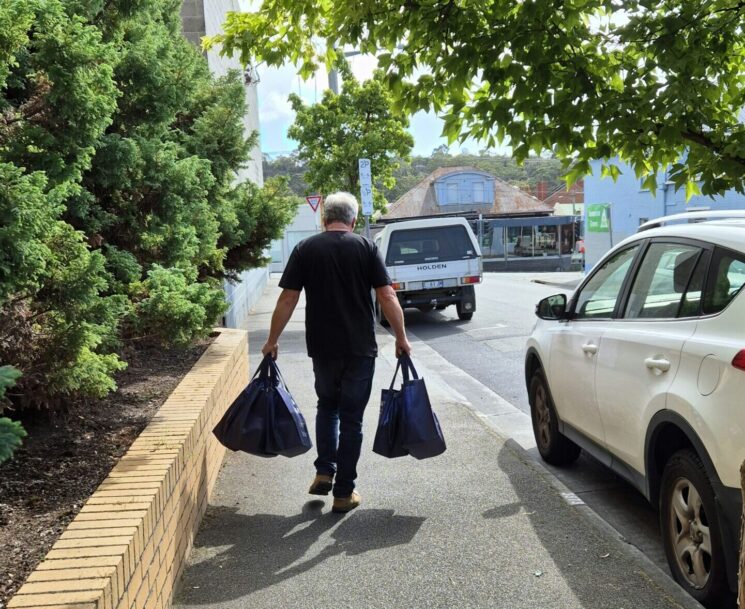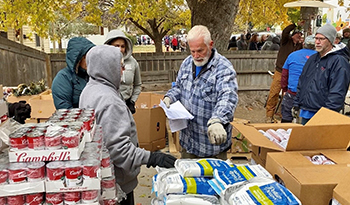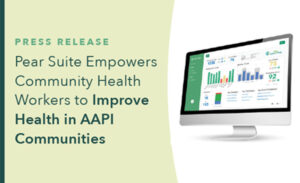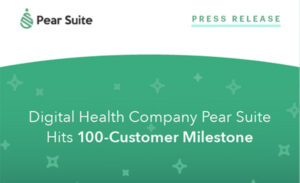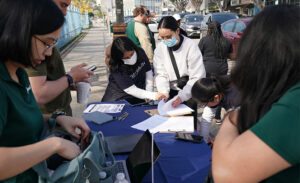When an individual or child goes without adequate nutrition, a number of challenges can affect their physical, mental, and emotional health and well-being. That is why food security is a social driver of health—it can have a significant impact on an individual’s ability to thrive, both in the short- and long-term.
It’s estimated that millions of Americans either cannot afford or cannot access quality food regularly. Some live in rural or isolated areas with food deserts, while others are unable to afford basic groceries.
In addition to these challenges, the U.S. is also experiencing:
- New and higher tariffs on imports are raising prices on fresh fruits and vegetables.
- Outbreaks of foodborne illness, listeria, and salmonella in cucumbers, ready-made pasta, and eggs in 2025 alone.
- Changes to age, income, and work requirements to the Supplemental Nutrition Assistance Program (SNAP) are increasing barriers to food access for individuals and families.
When shelves are empty, prices are high, funds are low, and there are few resources, people turn to food banks, food recovery groups, community health workers (CHWs), and other local community-based organizations (CBOs) to fill the gaps.
What is the food security SDOH?
Food security or insecurity, specifically access to fresh, nutritious food, is classified under the neighborhood and built environment social driver of health. This social driver is also related to household income, access to healthcare services, and factors surrounding a per
son’s social or physical environment, such as community support, public safety, the availability of safe and stable housing, transportation, walkable streets, and accessible recreation facilities.
An updated report on food security in the U.S. from the USDA found that 13.5% (18 million) of U.S. households were food insecure at some time during 2023. At the same time, 8.4% of American households experienced low food security, defined as the “reduced quality, variety, or desirability of diet, with little or no indication of reduced food intake.”
And 5.1% experienced very low food security, which is marked by disrupted eating patterns and reduced food intake, in addition to:
- The inability to afford a balanced meal
- Cutting or skipping meals in a three-month period
- Losing weight
- Being hungry but not being able to eat
- Not eating for a whole day in a three-month period
Hunger, a byproduct of food insecurity, was defined as a psychological condition from the “prolonged, involuntary lack of food” back in 2006 by the Committee on National Statistics (CNSTAT) of the National Academies. It results in “discomfort, illness, weakness, or pain that goes beyond the usual uneasy sensation,” and an estimated 47 million people in the U.S. face it, including 1 in 7 children.
Food insecurity and hunger can affect kids as deeply as adults. For example, delaying cognitive development in children or affecting motor skills and reaction time in adults. Individuals with low food security may experience difficulty focusing and concentrating in academic settings, as well as struggle with fatigue, increased stress, and irritability.
But most of all, food insecurity and hunger are major barriers to individual and community health.
Why food security matters to overall community health outcomes
Quality food and clean water are the foundations of a functioning community. Inadequate access to fresh, nutritional food sets societies back by amplifying racial, economic, and geographic health disparities and reinforcing structural inequality.
When it comes to physical health, nutrition can alleviate a variety of conditions. It plays an essential role in the management of diabetes and heart disease, for example. The right nutrients can increase immune response, too, reducing the spread of infectious disease. In children, it plays a critical role in physical development.
Hunger can significantly alter a person’s brain chemistry, releasing hormones that affect mood and motivation. Communities with inadequate food are likely to experience more widespread negative individual and family health relations. Food-related stress is common in underserved households, especially during summer and winter breaks when some children lose access to regular school-provided meals. Mentally, food insecurity can lead to higher rates of depression, anxiety, and suicidal ideation in people of all ages.
Those who go without food may struggle in classroom settings, become truant, or drop out. Looking at the bigger picture, this perpetuates intergenerational cycles of poverty and poor health, limiting community advancement, particularly in predominantly urban, rural, Black, and Latinx communities.
Common CHW and CBO food and nutrition services
CHWs and CBOs, as trusted community resources to address social drivers of health, including food security, play a role in reducing the frequency and impacts of food insecurity. Common efforts to mitigate food insecurity are Medicaid-covered services like case management, health education and counseling, and medication delivery.
CHWs can also help food-insecure families connect to food-related benefits programs and apply for SNAP and other benefits while advocating for their changing needs in healthcare systems.
Through health education, CHWs can tailor nutritional advice and education events to meet communities where they’re at culturally. That means showing Medicaid and non-Medicaid members how to budget and make food choices that help alleviate chronic conditions.
On an individual level, health education can support patients who may not be following care plans as closely as they believe. For example, a person who’s recommended a low-sodium diet to manage high blood pressure or a cardiovascular condition might be choosing canned vegetables over fresh or frozen, unaware that canned varieties are full of sodium for preservation. Making healthier choices can often be a matter of changing someone’s perspective and general knowledge about food and healthy alternatives.
CHWs can also refer to service providers that put food directly into the hands of those in need—through stipends and physical goods like grocery deliveries.
There are myriad other ways CHWs and the organizations they work for can address this social driver. These partners demonstrate how to support community members in need in creative and inclusive ways, while maximizing the effectiveness of their operations.
Connecting community members to food assistance
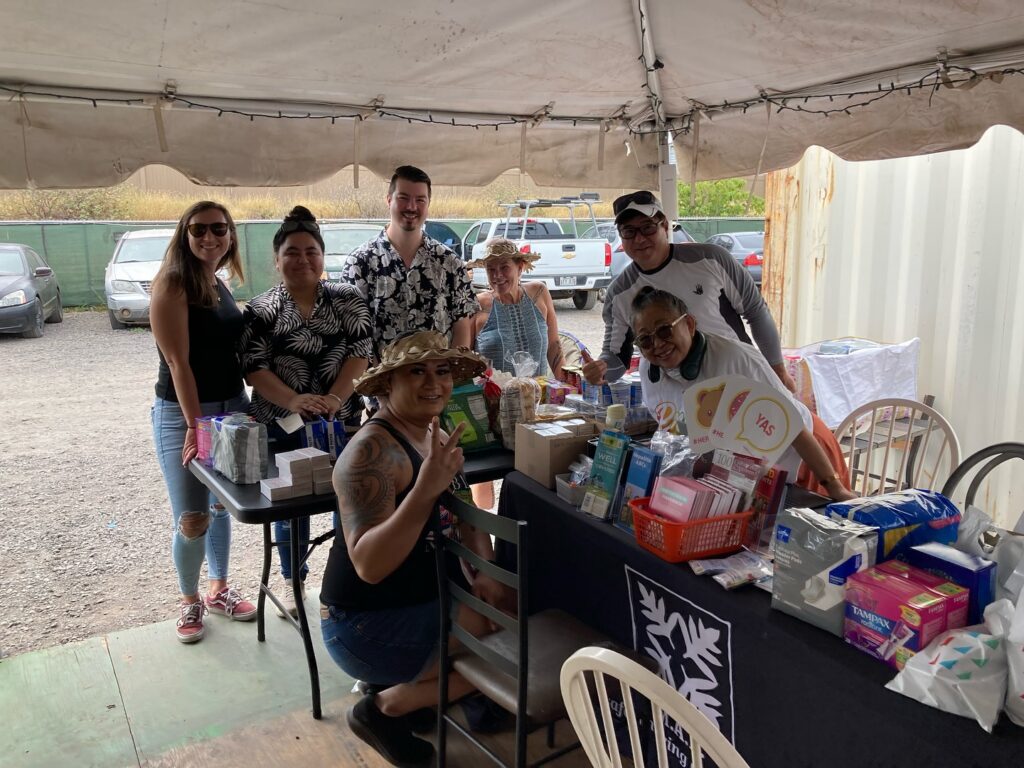
To ensure that community members are accessing programs they qualify for, Project Vision Hawai‘i helps Hawaiians enroll in, renew, and follow up on applications for the Supplemental Nutrition Assistance Program (SNAP) via their SNAP Hotline. Once enrolled, those members can access stipends and other assistance to purchase the foods they need. Their CHWs also support clients in five languages, plus English, and even travel to rural communities to provide screenings, further increasing access to one of the most prevalent SDOHs.
Medicaid and non-Medicaid members nationwide are getting grocery and nutrition assistance from Instacart through referrals to Instacart Health’s food programs. A partnership between Instacart and Pear Suite further reduces barriers by pairing technology and food voucher resources.
Providing food education and health support
Meanwhile, organizations like Modify Health and Mom’s Meals make accessing food that not only nourishes but also supports care plans simpler. They offer medically-tailored meals, suitable for irritable bowel syndrome (IBS), Type 2 diabetes, heart disease, and other chronic conditions through a delivery service, and also provide access to food education through a dietician. Consultations, one-on-one chats, and a hotline allow customers to ask questions and get tailored support to address their nutrition needs and improve their health outcomes.
In Sacramento, California, Hmong Youth and Parents United (HYPU) offers culturally sensitive educational, social, and economic services and resources to youth and adult community members. This keeps clients connected to their cultural heritage while accessing programs that help them thrive, including cooking classes that blend nutrition education and tradition.
Delivering fresh food and meals to underserved or at-risk community members
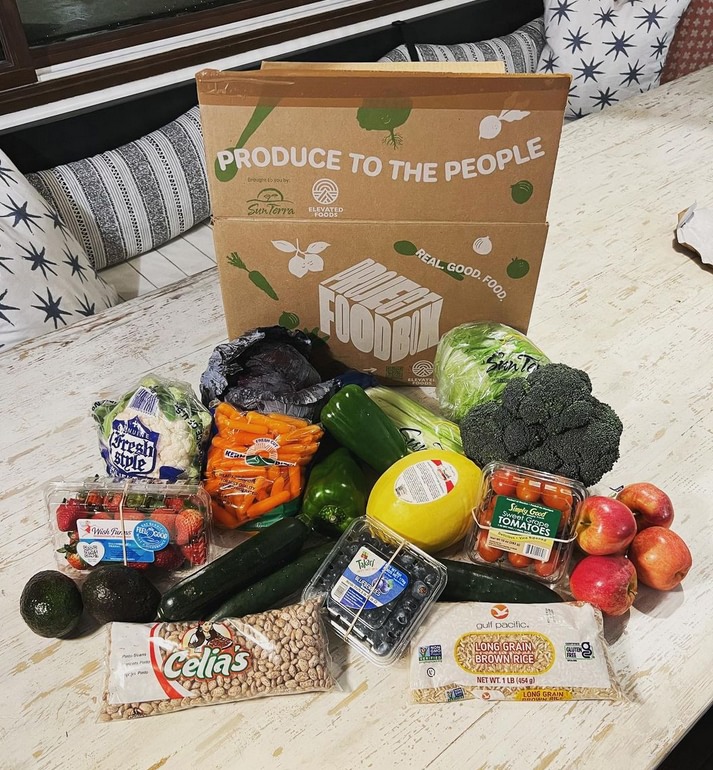
California-based Project Foodbox delivers medically tailored groceries to combat food insecurity and diet-related chronic illness among the state’s Medi-Cal members across 26 counties. The organization sources fresh produce from minority-owned and operated farms and partners with the state’s health plan as part of CalAIM’s Community Supports initiative. Since 2020, the group has shipped more than 5.2 million boxes of fresh food.
Meanwhile, organizations like AlohaCare in Hawai‘i are ensuring that one of the most vulnerable populations—seniors—have access to fresh foods and produce. Their team, alongside Pear Suite CHWs, has been co-hosting produce deliveries to residents at Housing and Urban Development (HUD) senior housing sites and other community locations since 2023. These deliveries act as a way to connect and build relationships with seniors to then discover other care gaps that need to be addressed.
Care navigation software helps CHWs close the hunger gap
Care navigation software for community-based organizations plays an essential role in fighting hunger and food insecurity. Most notably, Pear Suite’s solutions digitize client and care management, referrals, and services rendered for more efficient use of a CBO’s resources, accurate Medicaid billing procedures, and simpler reporting of positive health outcomes overall.
The care navigation platform has custom care plans and workflows, helping CHWs log activities from initial meetings to facilitating services and conducting check-ins. This digital paper trail tracks services performed, education provided, and referrals made to Medicaid and non-Medicaid members, for example, food voucher program engagement or foodbank referrals. Tracking food security-related service activities simplifies the billing process for CHW services that are eligible for reimbursement. For example, submitting claims to health plans or managed care organizations for providing medically-tailored meals can be done in fewer than 10 clicks.
For Project Vision Hawai‘i, this means using the platform to document SNAP-related activities or monitoring when a client is eligible for renewal to ensure that there’s no lapse in coverage. For groups, such as Instacart or Modify Health, this means connecting CBOs and CHWs to these programs as referral partners, ensuring that clients get the aid they need through a closed-loop referral program.
And in states like California, Rhode Island, Arkansas, and others, where a CHW benefit is available through Medicaid, partners like Project Foodbox and HYPU use the platform’s billing feature and Pear Suite’s payor contracts to earn additional revenue to sustain their needed programs.
The Pear Suite platform is a solution that will end reliance on paper, spreadsheets, and manual processes. It is also HIPAA- and SOCS 2-compliant, giving assurance that clients’ sensitive information is protected. Overall, the organizations and health plans using our technology triple staff productivity, significantly increase client engagement, and experience up to 200% more reimbursement potential with fewer claims rejections.
